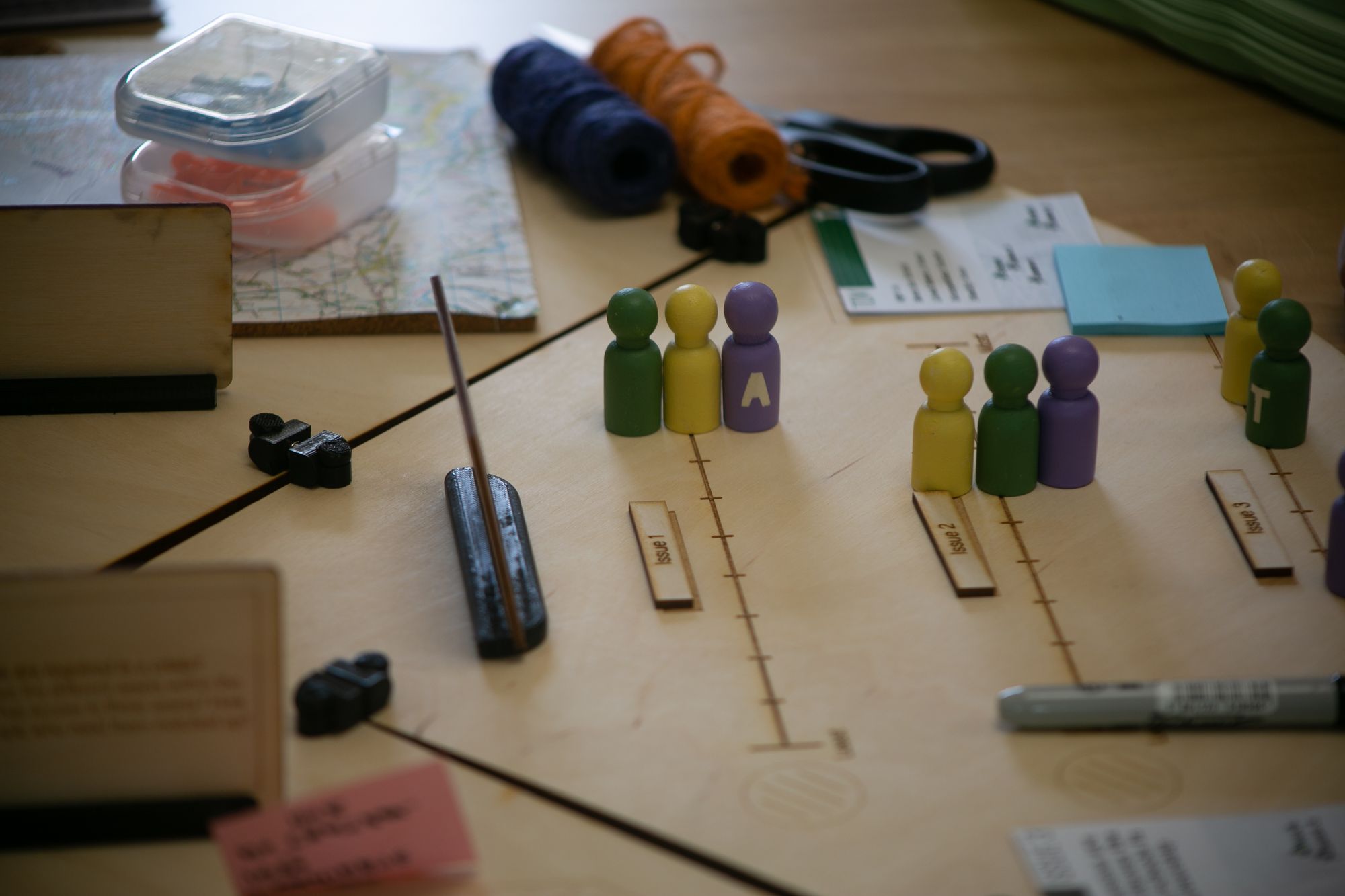
In taking an asset-based approach to ‘design thinking’ and innovation we have created a methodology that understands, builds around, and enhances what is good in communities while mitigating risks and harms.
In the pilot, we worked with rural civic organisations and residents. The method allowed for a symbiotic environment where participants are ‘sensitised’ to the potential but also needed work to deploy a community technology while at the same time allowing the researchers be to sensitised to the specific contextual considerations and social norms and practices.
What is a civic probe?
The civic probe is in one sense a cluster of ideas that embodied beliefs and questions about the way civic information infrastructures could respond to the context (from traditional fieldwork and design ethnography), as well as embodying the research team’s ideas about what makes civic technology successful in communities.
In the pilot we developed three prototypes. One embodied a set of ideas was around the idea of public media, another about data visualisation, and another about was about public events and civic activities.
The intention was to elicit residents’ concerns and ideas working out was meaningful and what was practical, as well as opening discussion, identifying needs, and managing expectations about what was needed to make new civic technologies and infrastructure have a lasting impact, such as human infrastructure and skills, buy-in from key stakeholders, and working to promote existing assets.

The Civic Probe Method
The overall study design arch for the initial (pilot) civic probe study takes shape around three distinct but cumulative stages:
- Design activities with partners to reveal values, assumptions, and blind spots with services and stakeholders
- Design of prototypes, not in response to, but to respond to, the first stage
- Civic Probe workshops
1. Design Activities stage
This stage involves the research team supporting partners to gain a different understanding of the context and key partners through a series of design activities. In the pilot we started with two mapping activities (stakeholder and service).
We then worked with them to create personas, starting with typical service users, then hardly reached people, and finally, we asked them to imagine other personas who are hostile to the partner organisation. In the third session, they created user journeys for the personas based on their goals, motivations, barriers, etc. and the service map created in earlier sessions.
2. Design Civic Probe Prototypes stage
The design of prototypes that function as civic probes. These prototypes or provocations can be repurposed from past projects, off-the-shelf technologies and platforms, or design fiction.
They should, as a collection, pose questions that cover a range of pathologies (the researcher/designer's knowledge) about civic technologies. In this pilot study, we focused on governance, situatedness, media, data/information value, and stakeholder buy-in.
This stage also involves the creation of activities and tasks for participants, which become embedded in the shared tabletop space through the design of civic probe segments. These tasks are based around simple design activities, such as mapping or priority sorting, but respond to and turn attention to specific issues and questions, as identified in the first stage.
3. Civic Probe workshop stage
The goal of the workshop is to engage people in the questions and ideas that are embedded in the prototype designs and segments to prompt people to reflect on the type of civic technology appropriate and manageable for them.